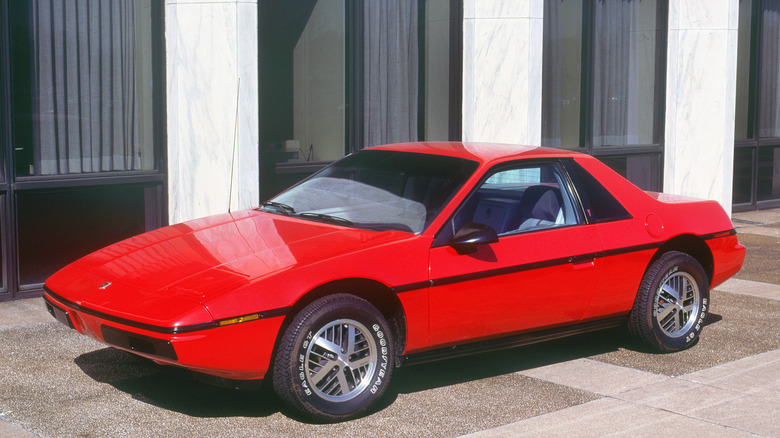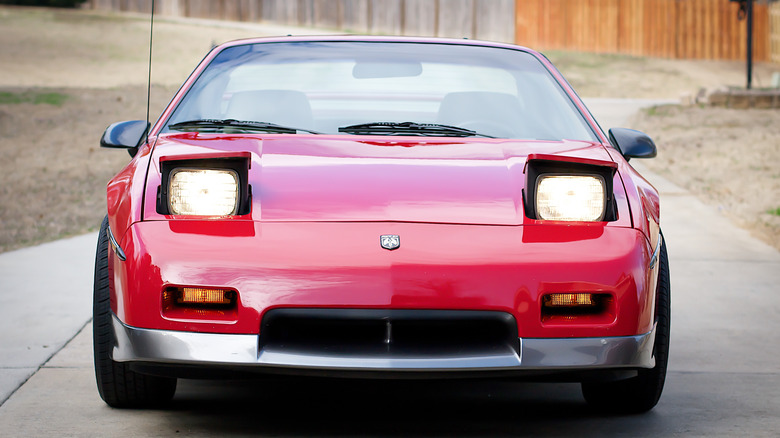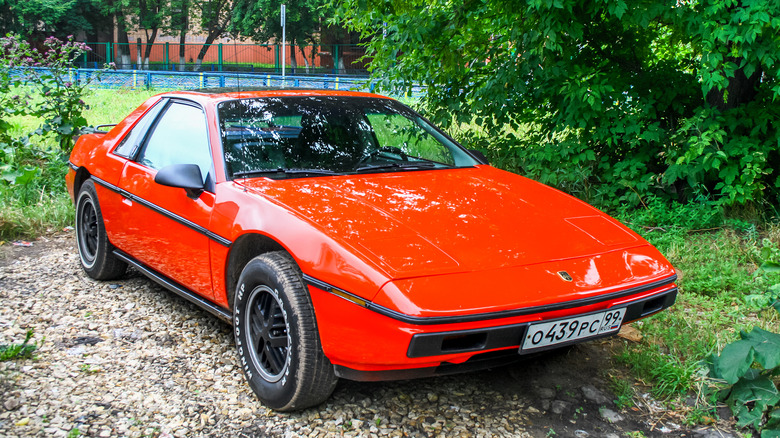The Pontiac brand met its demise after parent company General Motors filed for Chapter 11 bankruptcy in 2009, amidst an economic recession. GM had to kill off multiple slow-selling subsidiaries — Hummer, Saturn, Saab, and Pontiac — to reorganize the brand’s offerings. According to The Guardian, it was the worst collapse of a manufacturer in United States history, and spelled the end of Pontiac — an automaker once renowned for delivering excellent performance and style to GM’s lineup of car manufacturers (per The New York Times).
Pontiac is best known for the legendary GTO (the progenitor of American muscle cars), Trans AM, and the iconic Firebird. However, Pontiac enthusiasts could point to the two-door, mid-engine Fiero as one of the best examples of Pontiac’s engineering efforts (per Fiero Focus). The Fiero was the first two-seat, mid-engine sports car built by a Legacy automaker, and predates the outstanding C8 Corvette’s mid-engine layout by at least 35 years.
However, development for the Pontiac Fiero became so complicated and expensive that GM canceled the project thrice before changing its mind again. It barely made it to commercial production, but the Fiero became an engineering masterpiece when all was said and done.
Pontiac Fiero: Building excitement
The Pontiac brand was languishing behind competitors in the late ’70s and early ’80s. Bill Hoglund, Pontiac’s general manager at the time, was looking for ways to resurrect the brand’s once-prominent sporting persona headlined by the GTO in the ’60s. The 1970s were a critical turning point for American carmakers. Well-built and highly fuel-efficient Japanese cars were entering stateside, and American buyers were outgrowing their V8-powered gas guzzlers due to the 1970s oil crisis.
Hoglund had a two-seat sports car in mind, but he told GM executives it would be a two-seat, fuel-efficient commuter car. The brass agreed and gave Hogland $700 million to bring the vehicle to fruition (per Motor Trend). Now, $700 million is a lot of money for us average folks, but it was chump change for the most cash-rich automaker on Earth. Moreover, it was modest compared to the billions required to develop a new car from scratch.
Innovative engineering
Known internally as the P-car, Pontiac had to find ways to build the new Fiero within budget. They saved money by agreeing to scavenge the GM parts bin for the 2.5-liter engine, the driveline, and the suspension. But then again, Fiero’s bespoke steel space frame and bolt-on plastic body panels required new construction techniques to make it right.
According to Motor Trend, Pontiac invited suppliers to test the prototype P-car, and sought advice on how to lower the assembly and manufacturing costs. One was Gilman Machine Tool, which built a two-story mill and drilling machine custom-made for assembling the Fiero. The result was panel gaps that would rival the best German and British luxury cars. Moreover, the Pontiac Fiero’s racing-derived, space frame architecture and pioneering assembly process gave it among the highest ratings recorded in GM barrier crash safety tests (per Fiero Focus).
Bill Hoglund had the vision to swim against the tide, despite all odds. The Pontiac Fiero debuted in 1984 within budget, and the brand sold 101,000 units during the first year of production. With prices starting at about $8,500, the Pontiac Fiero epitomized the brand’s “We Build Excitement” slogan, but the revelry was short-lived. Pontiac only sold 47,000 Fieros by 1987 (per LA Times), and the steep decline continued despite updating the Fiero with a more potent six-cylinder engine and five-speed manual gearbox. Finally, GM axed the Fiero in 1988, marking the slow demise of the Pontiac brand into the 1990s and 2000s.
Stay connected with us on social media platform for instant update click here to join our Twitter, & Facebook
We are now on Telegram. Click here to join our channel (@TechiUpdate) and stay updated with the latest Technology headlines.
For all the latest Automobiles News Click Here




